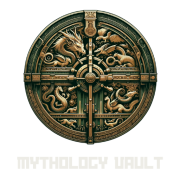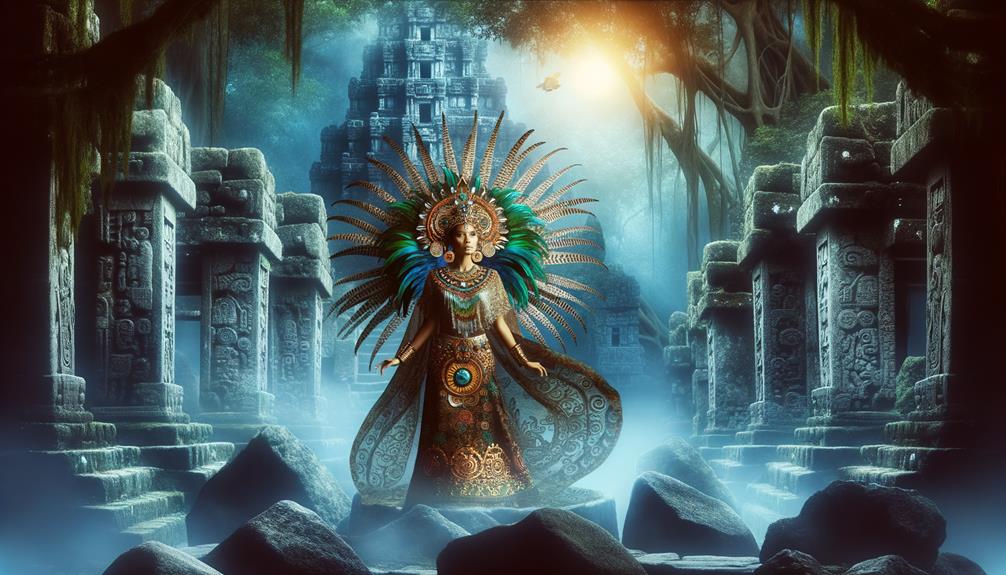The Serpent Woman Cihuacoatl from Aztec mythology captivates us with her intricate symbolism of life's dualities. Like Kali, the Hindu goddess, she represents creation and destruction intertwined. Her imagery as a nurturing mother and skeletal elder reflects existence's cyclical nature. By ushering in the Fifth Sun, she echoes the role of the Greek Earth goddess Gaia. This complex duality challenges our perspective on the universe's equilibrium.
Origins and Symbolism
In the vibrant world of Aztec mythology, Cihuacoatl emerges as a captivating figure, representing the eternal dance between life and death. She personifies the duality inherent in existence itself.
To the Aztecs, Cihuacoatl symbolized motherhood's nurturing powers and the inevitability of mortality. She manifested as both a youthful woman, radiating the energy of creation and growth, and a skull-faced elder, reminding all of the relentless passage of time.
This duality was intricately woven into Cihuacoatl's various depictions. As a young woman, she fostered life, while her elder form embodied decay and the ultimate return to the earth's embrace. Such contrast underscored her complex role within Aztec beliefs, linking the birth of existence to its cyclical cessation.
Cihuacoatl's influence extended beyond her visage. Her connections to deities like Mixcoatl and Huitzilopochtli highlighted her profound impact on the cosmic order. Known by names like Quilaztli and Tonantzin, each moniker unveiled a different facet of her multifaceted nature, a testament to her significance within the Aztec pantheon.
Role in Aztec Creation
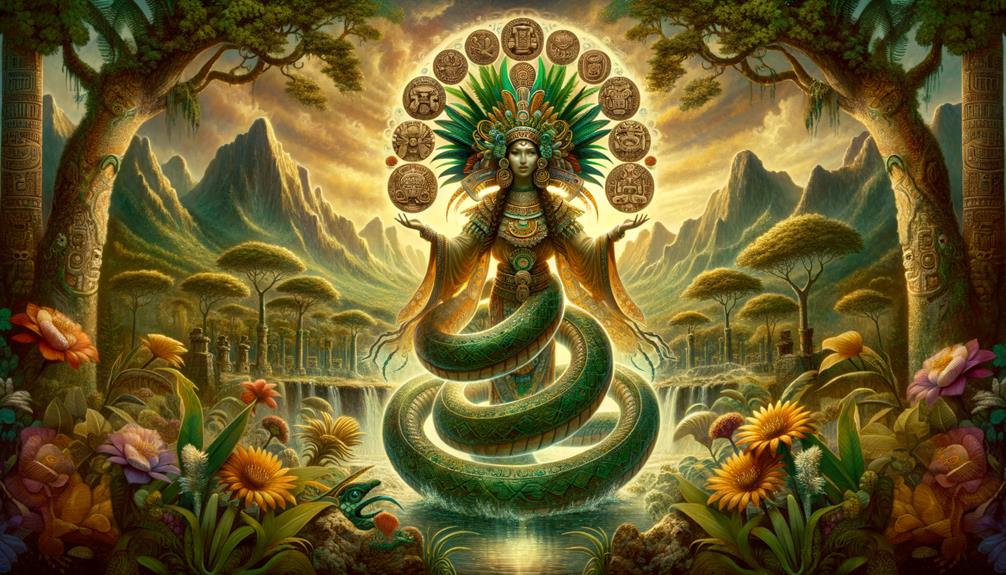
Cihuacoatl's significance in Aztec creation mythology lies in her representation of life's cyclical nature. To the Aztec people, she embodied the delicate balance between creation and destruction, birth and death. Known as the mother of Mixcoatl (the cloud serpent) and Huitzilopochtli (the god of war), her dual depiction as a skull-faced elder and youthful woman symbolized this duality.
Central to her role is her guidance in the birth of the Fifth Sun, marking the current era in Aztec cosmology. More than a nurturing figure, Cihuacoatl commanded natural forces like storms, highlighting her cosmic influence. With names like Quilaztli and 'she who is surrounded by a spider's web,' she governed various aspects of existence.
Through Cihuacoatl, the Aztecs understood the eternal interplay of life and death, creation and destruction, woven into their world's fabric. Her diverse influences exemplified their perception of the universe's cyclical nature.
Worship and Rituals
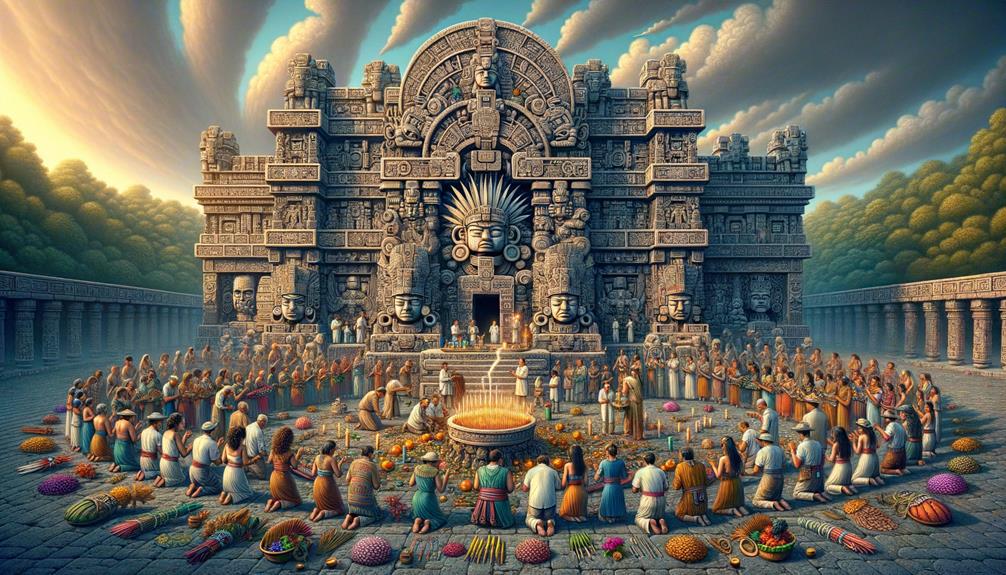
To honor Cihuacoatl, the Aztecs engaged in ceremonies that highlighted her dual role as a life-giver and fierce protector. As a fertility goddess central to agricultural cycles, they offered maize, incense, and blood sacrifices to ensure the earth's fertility. Planting and harvesting rituals were crucial, invoking her blessings for bountiful yields.
Women, especially, sought Cihuacoatl's guidance during childbirth. They participated in sweat lodge ceremonies, seeking her presence and protection throughout labor. Midwifery practices were deeply entwined with her worship, as midwives viewed her as a divine facilitator.
The Chalmeca people of Culhuacan held elaborate feasts and dances to honor Cihuacoatl, ensuring their community's prosperity. This combination of rituals reflected her archetypal significance, merging the nurturing and protective aspects into a cohesive practice.
| Element | Ritual | Purpose |
|---|---|---|
| Offerings | Maize, incense, blood sacrifices | Ensure fertile land |
| Women's Rituals | Sweat lodge ceremonies | Safe childbirth |
| Community | Feasts and dances by Chalmeca | Community prosperity |
These rituals embodied Cihuacoatl's archetype, blending the cycles of life, death, nurturing, and protection.
Depictions in Art
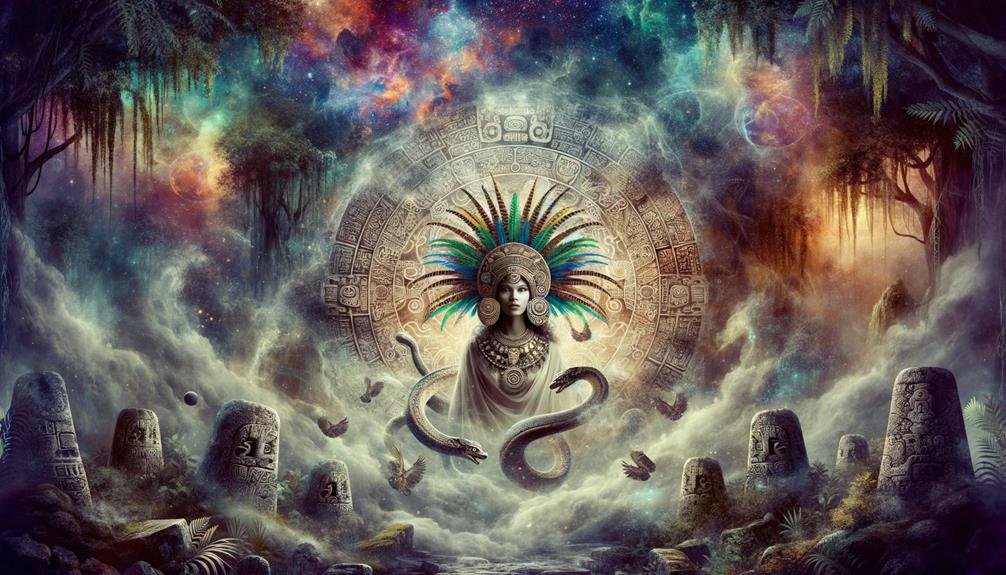
Drawing inspiration from intricate rituals and worship practices, artistic representations of Cihuacoatl vividly portray her dual nature as a nurturing life-giver and fierce guardian. Aztec artists depicted her in contrasting forms – sometimes as a skull-faced old woman, other times as a youthful figure, illustrating her transformative qualities. This duality lies at the heart of her role as the snake woman, embodying the interconnectedness of life, death, and creation.
Sculptures frequently show Cihuacoatl holding an ear of corn in one hand, symbolizing fertility and sustenance, while a serpent accompanies her, representing the primal forces of the earth. These elements emphasize her status as the city's patroness, protecting its people and ensuring their prosperity.
Her physical features, such as claws or fangs, further reinforce her role in maintaining the delicate balance between life and death. This imagery aligns her with other mythological figures who navigate the hero's journey, embodying both creation and destruction.
Artistic depictions of Cihuacoatl serve as powerful archetypal symbols, reminding us of the transformative qualities inherent in all life. By understanding her representation in art, we gain a deeper insight into the Aztec worldview and the profound interconnectedness of existence.
Legacy and Influence
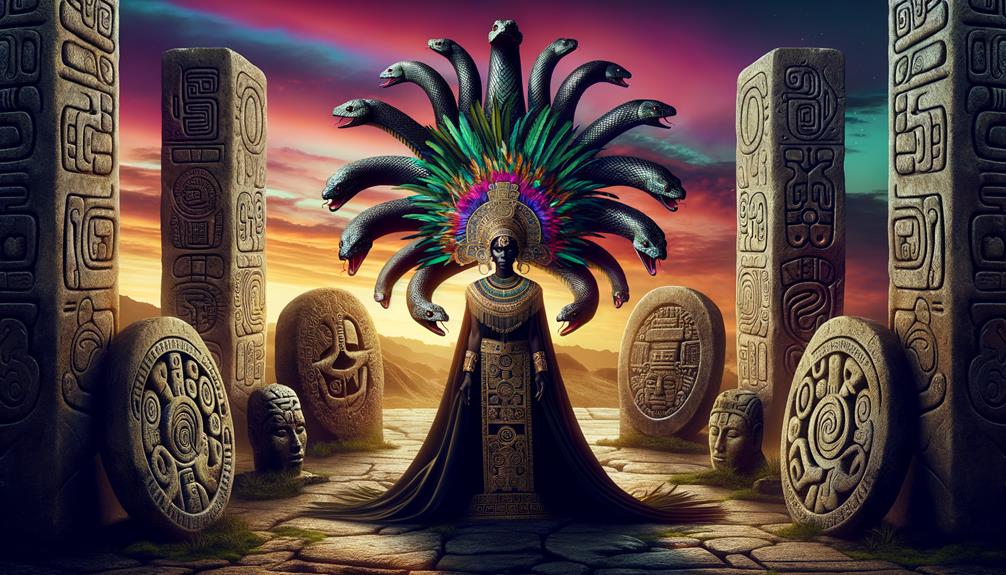
Cihuacoatl's legacy endures, shaping contemporary Mexican traditions and feminist ideals, akin to other iconic mythological figures. As the guardian of the Chalmeca and a revered deity in the Aztec capital, her spirit interweaves with modern-day festivities like Día de Muertos. During this vibrant celebration, people honor her multifaceted roles, recognizing her as an emblem of feminine fortitude and resilience. Her presence echoes in the commemoration of the deceased and the exaltation of life, mirroring her ancient role of guiding and safeguarding her people.
For feminists, Cihuacoatl's narrative resonates profoundly. She personifies not only the capacity for childbirth but the profound sacrifices women make. Indigenous communities celebrate her feast day, paying tribute to the enduring strength and sacrifices of women throughout history. Known by various names like Quilaztli and Tonantzin, her diverse titles reflect her multidimensional essence, symbolizing different facets of womanhood and creation.
Her influence continues to shape contemporary discourse on femininity, creation, and resilience, much like other archetypal symbols in mythology. Through her enduring presence, Cihuacoatl remains a potent symbol of strength and protection in today's society.
Frequently Asked Questions
Who Is the Goddess Cihuacoatl?
Cihuacoatl amalgamated the roles of nurturing mother and fierce warrior. She fused the earth's creative force, akin to Gaia, with Athena's martial prowess. This goddess guided humanity through the profound cycles of life, demise, and rebirth – a metaphor for the profound journey we all undertake.
How Is Cihuacoatl Similar to La Llorona?
Cihuacoatl and La Llorona represent powerful motherhood archetypes in Mexican folklore. Both figures experience a profound, harrowing transition from nurturing to grief-stricken sorrow, intertwining creation with loss. Their narratives poignantly encapsulate the hero's journey, a reflection of life's complexities.
Who Is the Snake Woman?
The Snake Woman symbolizes the primal mother figure – a creator and destroyer. Like mythological icons, she represents fertility, insight, and life's equilibrium, shepherding heroes through transformative odysseys.
Her tale interlaces ancient archetypes with contemporary resonance. The serpent's sinuous form evokes the eternal cycles of nature, death and rebirth intertwined. Yet the Snake Woman also embodies female power – she nurtures growth while commanding reverence through her wisdom and connection to the mysteries of existence.
From folklore to modern storytelling, her archetype endures as a reminder that life emerges from life itself, an ouroboros of perpetual becoming. Heroes encounter her guidance on their quests, their trials mirroring the cycles of the natural world she personifies.
Who Is the Aztec Goddess of Snakes?
Cihuacoatl, the Aztec snake goddess, exemplifies the cyclical essence of life through her duality – embodying both creation and destruction. Her legend mirrors the archetypal hero's journey, symbolizing the regenerative feminine force. Stories like hers have been passed down through generations, reflecting humanity's shared experiences across cultures.
